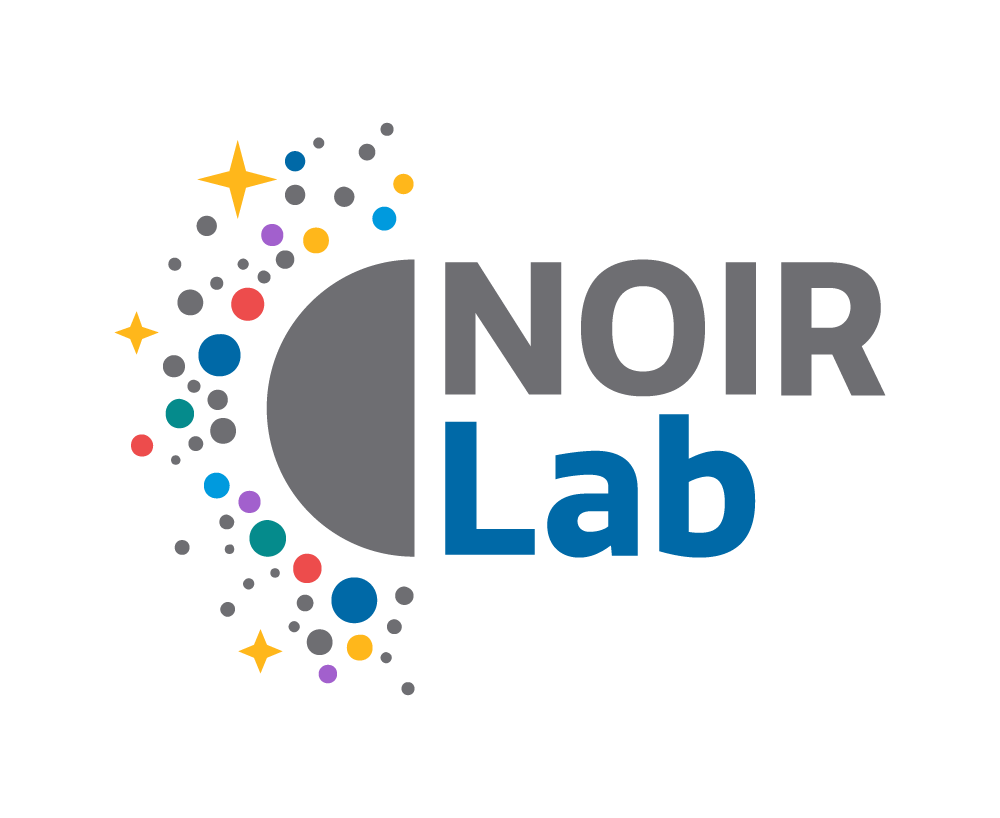Celebrating Cosmic Wonders: Analyzing NOIRLab’s Rosette Nebula Anniversary Image
2 November 2024
In celebration of its fifth anniversary, NSF NOIRLab recently released a dazzling new image of the Rosette Nebula, taken with the Department of Energy-fabricated Dark Energy Camera (DECam), mounted on the U.S. National Science Foundation Víctor M. Blanco 4-meter Telescope at Cerro Tololo Inter-American Observatory in Chile, a Program of NSF NOIRLab.
Part of what makes the image so striking are the contrasting colors swirling in ethereal layers around the nebula’s center. So it may surprise you to learn that the raw data from the camera hold no information about the light’s colors at all. In fact, all the camera captures is light intensity.
“Each pixel in the camera is like a little solar panel,” explains Travis Rector, an astronomer and image processing specialist who leads the production of many NOIRLab images. “The pixel just knows how much light is hitting it, and the more light that hits it the more electricity is generated, so the brighter it will be.”
To create colorful images like this one, astronomers take multiple images through different filters. Each filter selects a specific wavelength of light emitted by a particular gas. In the case of the Rosette Nebula, Travis and his team took images with three different filters: one that sees light emitted by warm hydrogen gas, one that sees hot oxygen atoms, and another that sees hot sulfur atoms. Next, they assigned the color yellow to hydrogen, red to sulfur, and blue to oxygen, and combined these images, resulting in the final eye-catching picture.
When it comes to choosing which filters to use and which colors to assign them, the guiding principle is to reveal an object’s details as clearly as possible. One standout feature of the Rosette image, for example, is the intense blue at its heart. Hotter gasses glow more brightly, so this tells us that the oxygen gas near the middle of the nebula is much hotter than the gas further out, because it’s being heated up by the fierce central stars.
Although astronomers use data directly from the telescope for quantitative measurements, images like this are useful visualization tools for building intuition about an object’s dynamics. “They aren’t just pretty pictures,” says Rector. “They can help us see the big picture and understand the science better.”
In fact, NOIRLab’s images even go through peer reviews to ensure maximum scientific accuracy. “Astronomical images often push the limits of high-quality imagery. Trying to capture every single photon and differentiating it from background noise is crucial when imaging very faint objects compared to subjects in everyday photography,” says Mahdi Zamani, scientific image specialist who works on the post-processing of NOIRLab images. “Therefore, post-processing techniques are highly considerate of pixel-level details and differentiating scientific data from noise.”
Creating such stunning images is no quick feat, especially those taken with the 570-megapixel DECam. “The large size of DECam images is a challenge for any post-processing pipeline not running on supercomputers,” says Zamani. “Post-processing this image took around four weeks of work from a group of seven people all involved in different stages.”
As well as marking a special anniversary for NOIRLab, this image represented a personal full-circle moment for Travis Rector. When he first arrived at Kitt Peak National Observatory as a postdoctoral researcher in 1998, he was tasked with making images to showcase the capabilities of the MOSAIC camera that had just been built, and the first image he made was of the Rosette Nebula. “We’ve produced somewhere between 400 and 500 images since that first Rosette,” he recalls. “So it’s fun for me to revisit an old friend 26 years later. It just shows how much we’ve improved not just the telescope technology but also our image-processing skills and software.”
Want your students to create their own multi-color images? Explore Vera C. Rubin Observatory’s Coloring the Universe investigation. This investigation teaches students the function and benefits of filters, the technology of digital imaging, and how to construct chromatically-correct color images that tell a scientific story. Also you can try out the more advanced stand-alone FITS Liberator used by most big observatories for their color images.
Dive in to explore the Rosette Nebula in More Detail
Contacts
Josie Fenske
Jr. Public Information Officer
NSF NOIRLab
Email: josie.fenske@noirlab.edu



